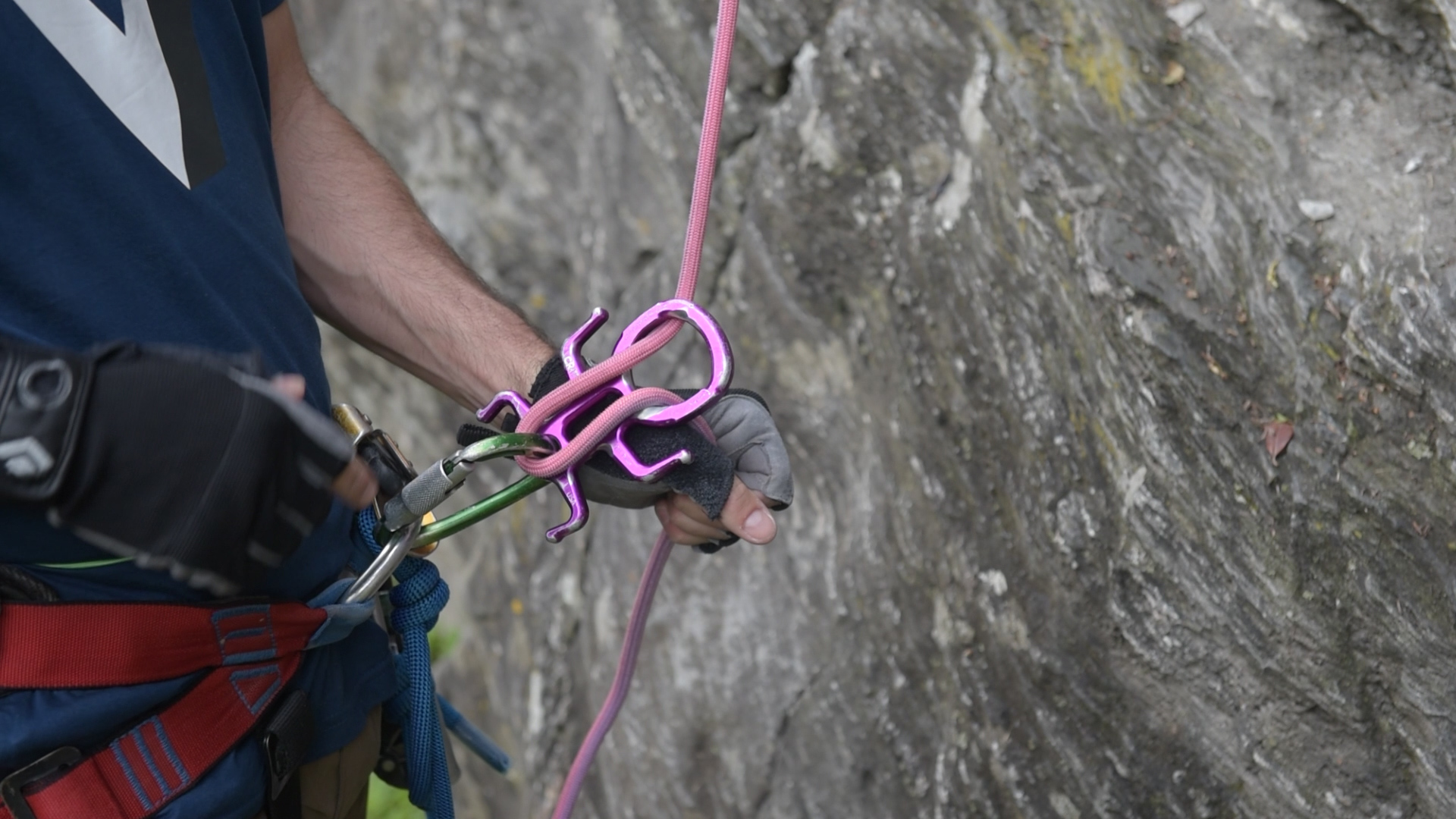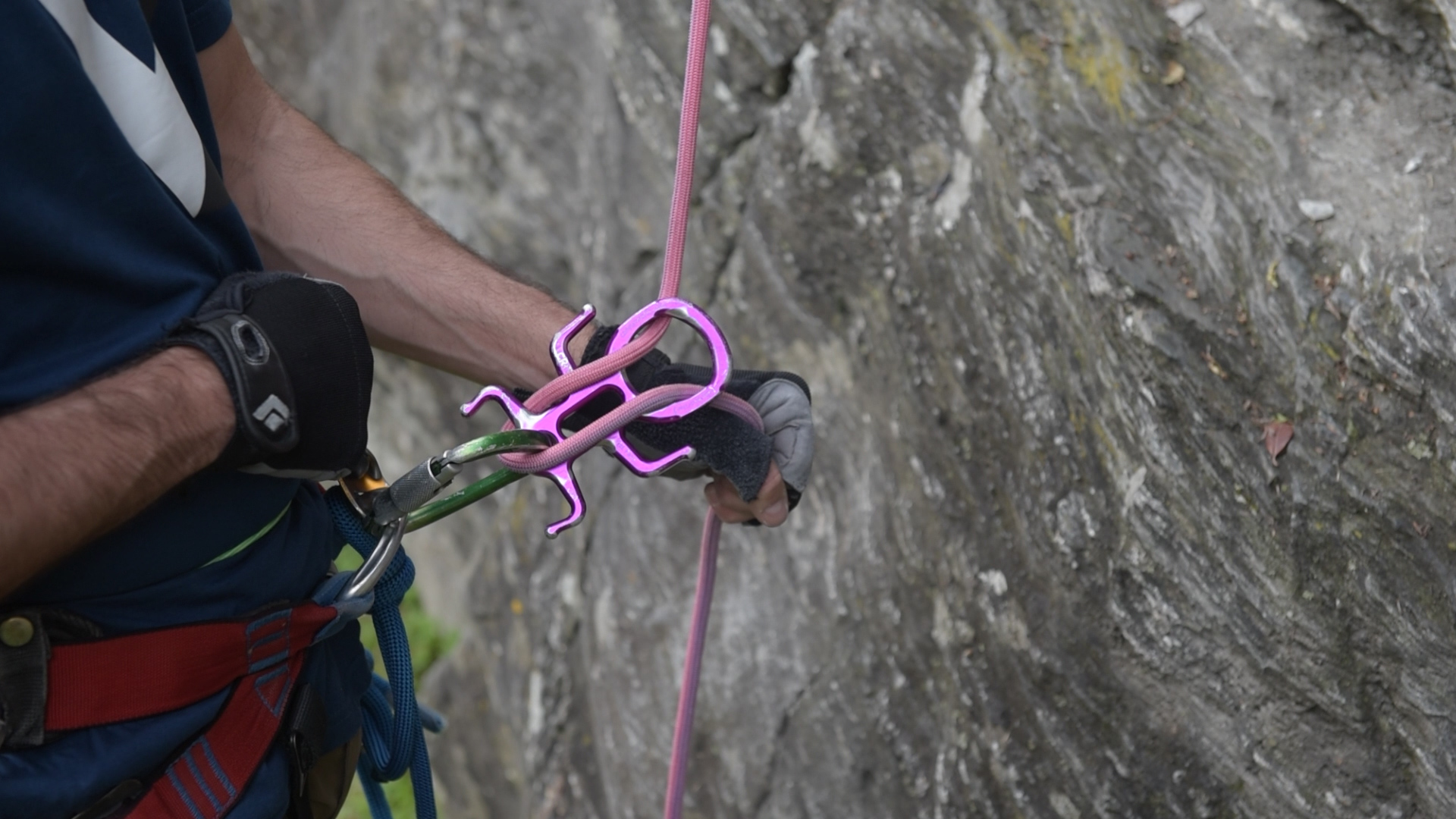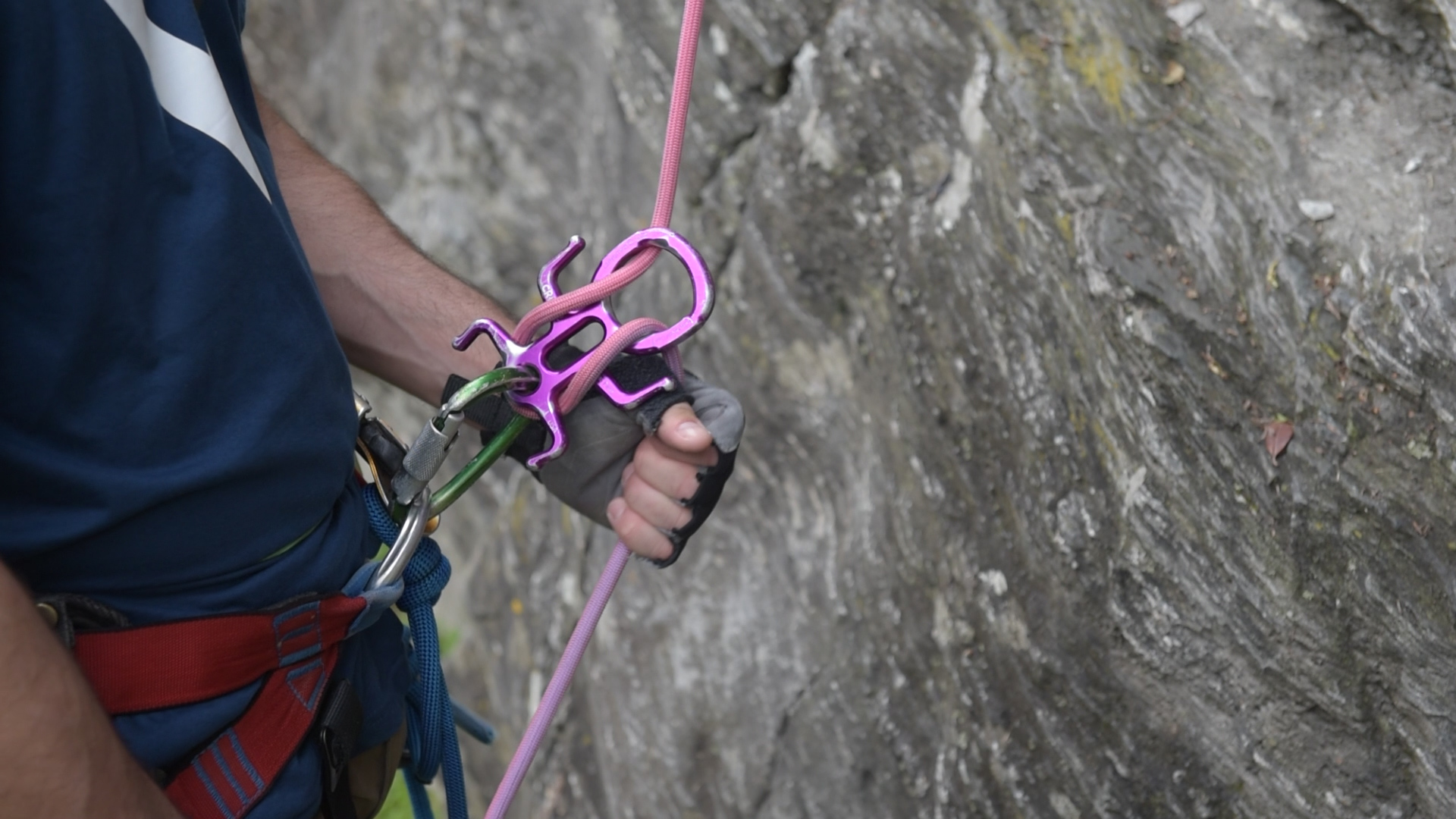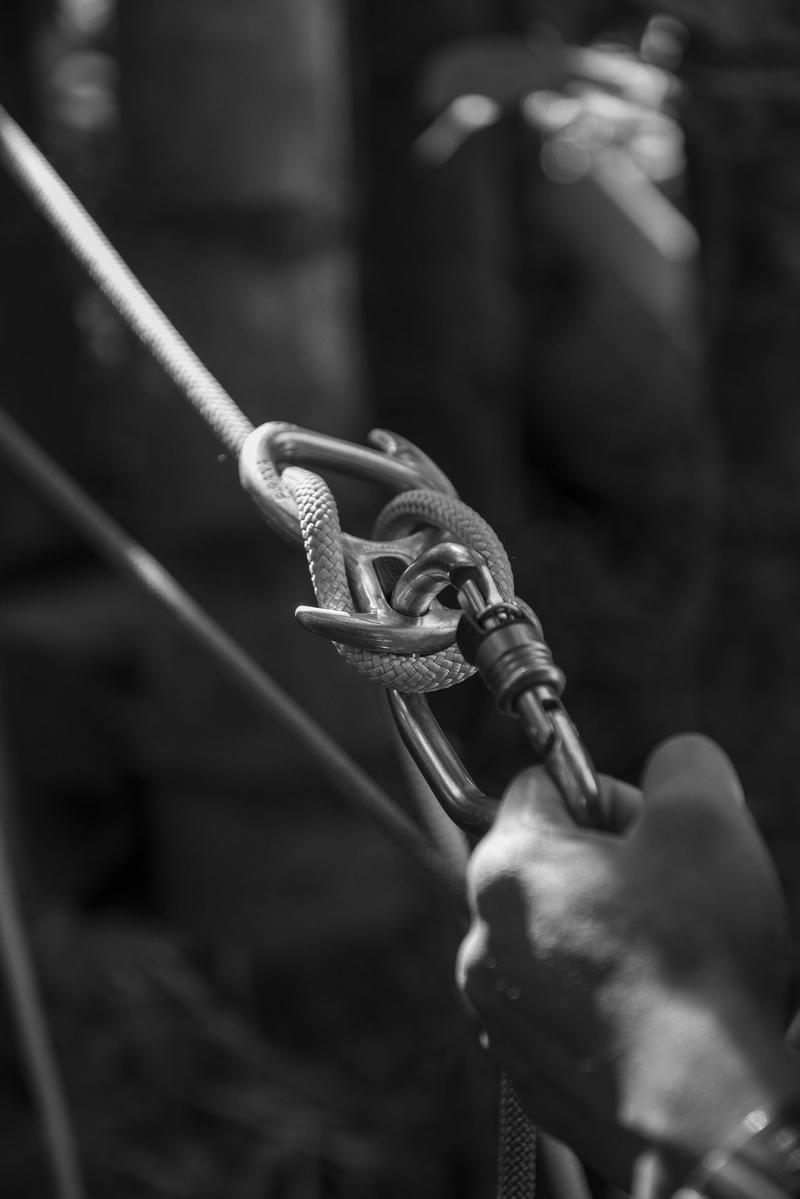Which speed mode to use on a canyoning descender?
One of the main characteristics of a modern canyoning descender is that we can change the level of friction that we use before we rappel, and easily mid rappel. Yes we love canyoning descenders, they have evolved over the past years becoming more and more adaptable and easier to use.
About canyoning descenders
Canyoning descenders come in all shapes and sizes as you might have seen on this review of the main canyoning descenders currently on the market. One of their key characteristics are the spurs located on either the rappelling side (asymmetrical), or both sides of the canyoning descender (symmetrical). We can use these spurs to set our friction before we initiate our rappel. To learn how to set up your canyoning descender for rappel check out our free Canyoning Level 1 online training course.
What the friction!?
Ok, in order to understand how canyoning descenders work, let’s dig a bit deeper on the physics of friction. Friction is the resistance to motion of an object when it rubs against another object. This resistance causes a transfer of kinetic energy (movement) into thermal energy (heat). In our case, the rope rubs against the descender and thus the resulting friction reduces our ability to move; it also heats up the metal so careful handling your device after a rappel!
The more the rope touches the descender, the more friction is generated and by exchange, our ability to move is reduced. The ability to control the amount of friction are what we call friction modes.
When you reach the top of a rappel how do you know what friction mode to choose, and also what are the differences modes?
In general, canyoning descenders will provide three initial friction modes:
- Fast Mode (also called “sport mode”);
- Medium Mode (or “normal mode”);
- Slow Mode (just slow!);
These three modes go from minimal (fast mode) to considerable friction (slow mode). It is important to choose the initial friction carefully, as this initial setup cannot be changed once we start our rappel and too much or too little friction could be a hindrance to a smooth rappel.
This choice will depend on many factors, including:
- rope diameter
- configuration of the obstacle
- your weight & skill level
- carried weight (e.g. backpack)
- the technique being used (e.g. guided rappel, or traverse line)
Fast Mode

Fast mode provides minimal friction, so you’re likely move really fast! It also will require you to hold a lot more of your weight on the rope. This is because as the rope passes through the descender and around the carabiner it has minimal contact with the spurs or features on the canyoning descender.
Fast mode should only be used in very specific conditions. A few examples include: very lightweight canyoneers, when using a guided rappel or rigging specific rope systems as you can learn here.
If you have very thick rope and you are a medium weight this may also be a good option.
Medium Mode

This is the standard mode for friction for most canyoneers. If in doubt this should be your go-to mode. It adds a decent amount of friction using one of the spurs on your canyoning descender. You will hold only a fraction of your body weight while rappelling.
For very light canyoneers this mode may prove to be too much friction, and similarly for heavy canyoneers, this may not have sufficient friction.
For ropes below 9mm in diameter, this normal mode can feel ‘sporty’ so even more friction should be required.
Slow Mode

This is pretty much the maximal initial friction you can add and should only be used in very specific cases. You can learn more about this in our free online training. By using both spurs of the canyoning descender you’re adding a significant level of friction. In normal conditions, the rope won’t move easily through the descender: you even might have to feed it in and it will be difficult to descend.
The slow mode is recommended for heavier canyoneers or if we are carrying a heavy load like a heavy backpack. This friction mode is used in advanced rescue situations when assisting someone on the rope. It can also be used for people who are new to canyoning when they want to feel a bit more control on their first few rappels.
If the rope is smaller in diameter or dry you may want to use the slow mode option.
In summary
The mode of friction you will choose depends on a number of factors. If in doubt, go for the medium mode. We recommend you play around with your canyoning descender in a safe environment like a low angled slope and feel the different modes and how they work. You can also add/remove friction during your rappel; to find out more about this technique join our free online training and find out for yourself.



